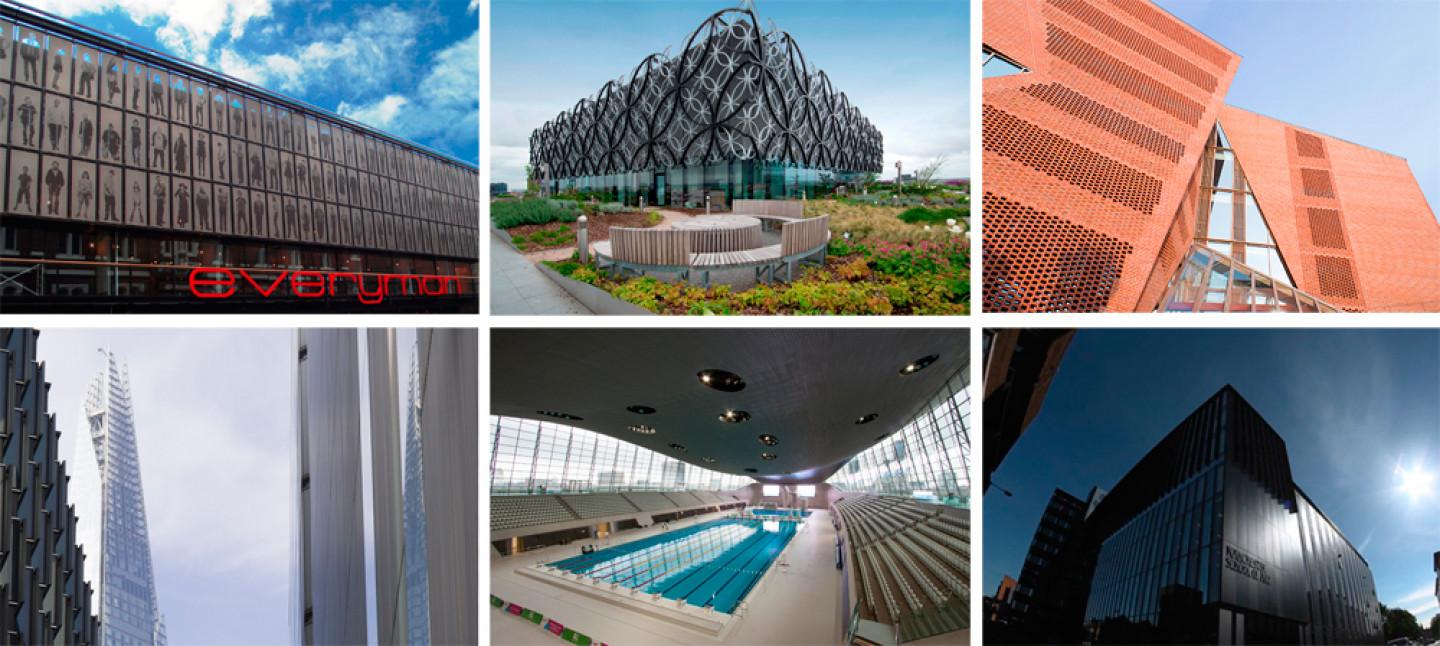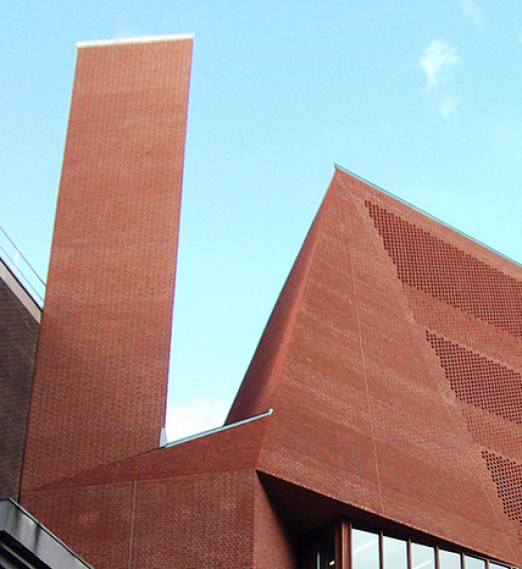The Stirling Prize winner will be announced this Thursday and many are speculating who will pick up Britain’s most prestigious architecture award. With this in mind, we thought we’d take a look at the shortlist.
The six projects are listed below and, because we know our products, we have included product case studies from each of the buildings. Which one is your favourite?
Update: The Winner: Everyman Theatre, Liverpool
-Philip-Vile.jpg?1423160452)
© Philip Vile
Originally founded in 1964, the rebuilt Everyman Theatre reopened on 1 March 2014 costing £27 Million. Designed by Architects Haworth Tompkins, the building’s considerable thermal mass and natural ventilation systems have contributed to it’s BREEAM Excellent rating.
Acoustic insulation was supplied by CMS Danskin – manufactured from a recycled rubber crumb with Zero GWP (Global Warming Potential) and Zero ODP (Ozone Depletion Potential), Regupol 6010BA also contributed to the project’s BREEAM ‘excellent’ rating; Lifts including a 1000kg through car passenger lift with glass doors, a rear of house 1350kg through car goods lift, two small 100kg service lifts, and a 3 stop high specification disabled platform were supplied by Knowsley Lift Services.
Other shortlisted Buildings:
1. Library of Birmingham:

The Library of Birmingham opened on 3 September 2013 having cost £188.8 Million. Designed by Architects Mecanoo, it is the largest public library in the UK. In stark contrast to its concrete predecessor, Mecanoo’s design makes maximum use of natural light with an eye-catching façade combining glass and interlocking aluminium hoops. Inside over 400,000 books are available on the shelves on the public floors and the building delivers the energy performance to match its looks with a BREEAM ‘Excellent’ Rating.

The library uses an Aquifer ground source system by Waterloo Air Products to reduce energy comsumption, smoke extraction systems by Elta Fans, pipe insulation from Kingspan Tarec, internal partitoning by Style, paint by Johnstone’s and concrete waterproofing by Sika.
Update: It was confirmed today (16/10/2014) that approximately 90,000 people voted and the Library of Birmingham received the most votes in the BBC’s public vote.
2. Saw Swee Hock Student Centre, London School of Economics
.jpg?1423160434) Saw Swee Hock Student Centre, London School of Economics | © Agnese Sanvito
Saw Swee Hock Student Centre, London School of Economics | © Agnese Sanvito
Designed by O’Donnell and Tuomey Architects, costing £24.1 Million, they wanted the brickwork to follow an origami style of folded elevations, including soffits and a 15 meter feature chimney vent, utilising the same Coleford brick, supplied by EH Smith, as was being traditionally laid on the rest of the building. 175,000 bricks have been used, none of which were cut – 46 standard shape bricks and 127 special bricks were used.

Solutions to the raked soffits and acute angle chimney flue were provided in the form of brick faced panels and angle returns, weighing in at around 53kg per m2, by Advanced Construction Systems Ltd.
3. The Shard, London
.jpg?1423160578)
The Shard © Agnese Sanvito
Designed by Architect Renzo Piano and opened in February 2013, The Shard is currently the tallest building in the European Union. From the very first sketches drawn on a napkin by Renzo Piano during dinner with entrepreneur and property developer Irvine Sellar, the Shard was always intended to be ‘all about the windows’, with expressive façades of angled glass reflecting sunlight and the sky, and affording 360° views of the city.
Over 16,000m2 of acoustically insulating floor screeds were installed by CMS Danskin, vertical rising partioning for some of the interior offices was supplied by Style, screeds were supplied by Ronacrete for some upper floors, more than 9,000 metres of Ensign cast iron pipework was installed by Saint-Gobain PAM for the building’s above-ground drainage system, 3500 metres of Hydrotech waterproofing and Derbidum flat roofing was supplied by Alumasc Roofing Systems, BLÜCHER pipes were supplied for the drainage of the basement and floors 26 upwards by BSS Group, 120 tonnes of Kuppam Green Granite was supplied by In-Opera for the exterior flooring space, not to mention the washrooms on the 68th floor fitted with Geberit’s Duofix framing system and recently voted one of 50 must-pee places to visit before you die!
 The washrooms of the 68th Floor - one of the 50 "must-pee places" before you die!
The washrooms of the 68th Floor - one of the 50 "must-pee places" before you die!
4. Manchester School of Art

Designed by Feilden Clegg Bradley Studios, costing £23.6 Million, the brief to the architects was to break down the divisions between subject areas and disciplines and provide a public space. The new open space provides a sense of community amongst the students. The heritage of the original building has been celebrated with concrete columns embossed with a pattern from the college’s own archive.
 Large aircraft hangar style doors separate the public and studio spaces
Large aircraft hangar style doors separate the public and studio spaces
 Manchester School of Art Interior
Manchester School of Art Interior
The criss-cross of timber stairs and bridges were supplied and installed by Nationwide Interiors and large aircraft hangar style doors from Jewers separate the public space from the student space.
5. London Aquatics Centre

The first of the buildings on the grounds of the 2012 Olympic Games to be completed, the Aquatics Centre was designed by Zaha Hadid Architects with an inherent flexibility to accommodate 17,500 spectators for the London 2012 Games in ‘Olympic’ mode while also providing the optimum spectator capacity of 2,000 for use in ‘Legacy’ mode after the Games.
ACO supplied large lengths of drainage for the Aquatics Centre including around 600m of stainless steel drainage channels and heel-safe gratings for the changing rooms, door controls were supplied by Dorma and the new entrance includes a stunning ‘wave’ reception desk made from Glacier White Corian and gates with Corian walls supplied by CD(UK).
What’s your favourite?
Tell us in the comments below who you think should win and why!


_Philip_Vile.jpg)



